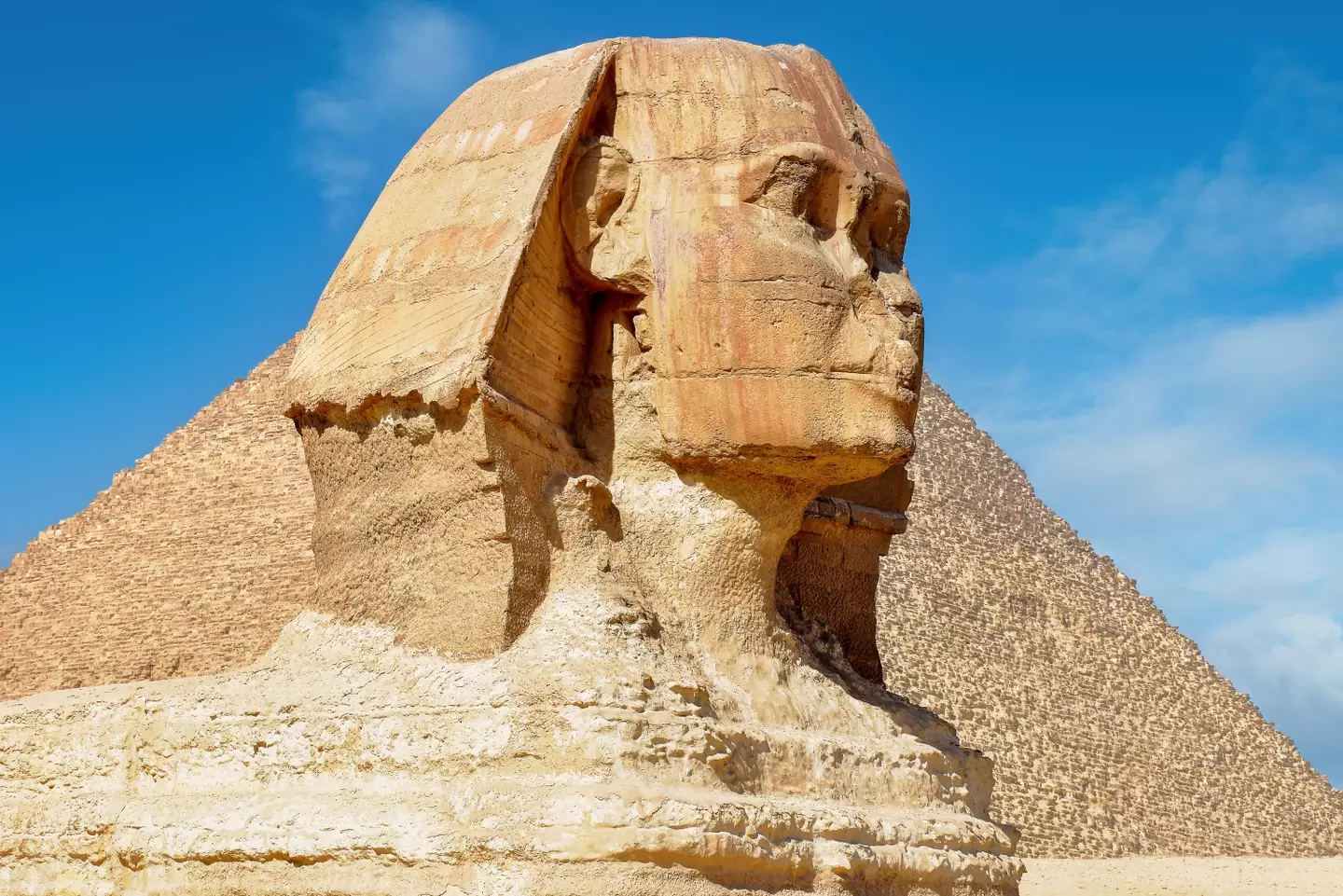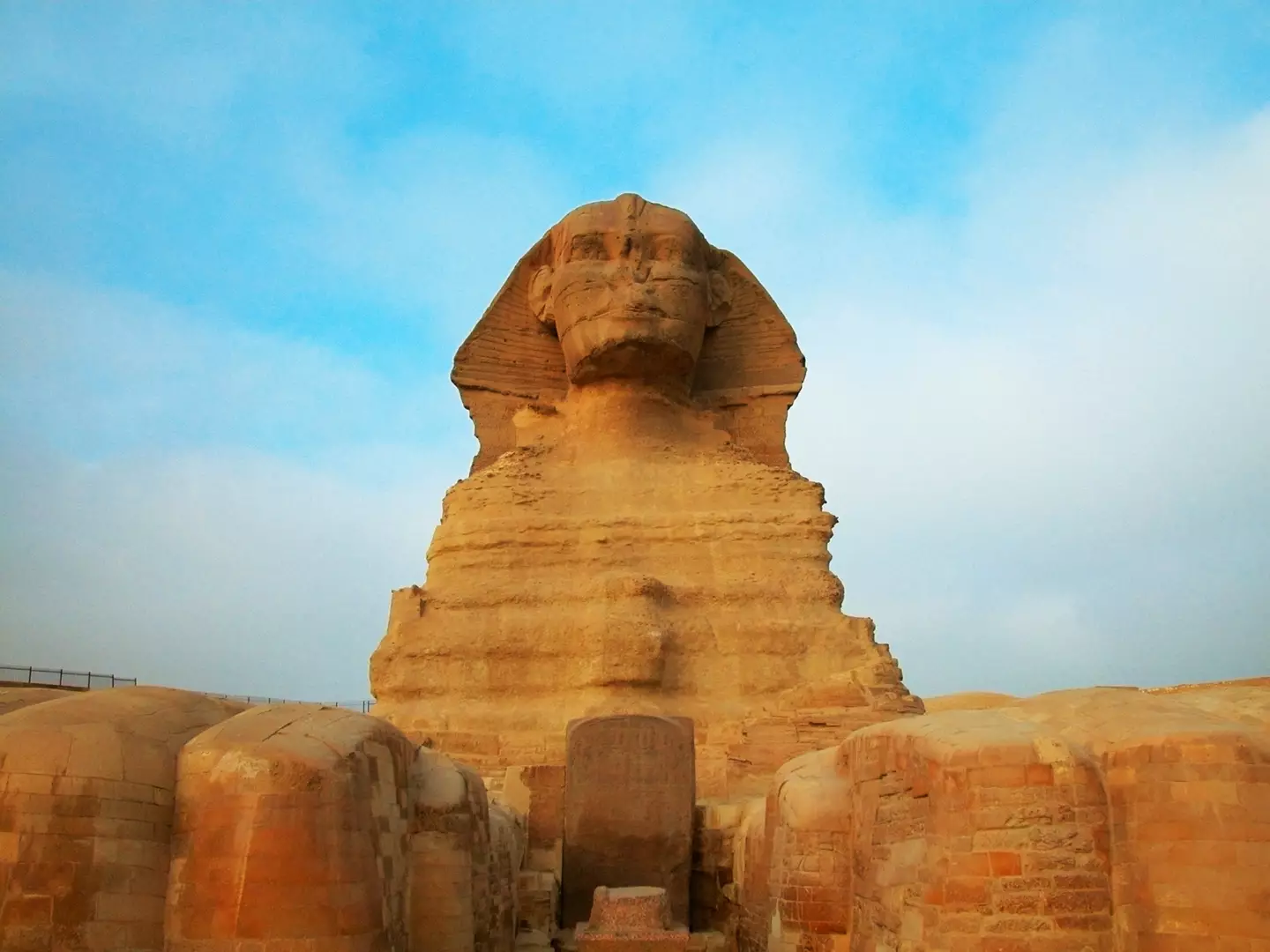
Thanks to science, we are able to learn new things about mysteries that may have lasted many a generation.
One of those is Egypt's Great Sphinx in Giza, but a new study may have uncovered the 'origin story' behind the ancient landmark made of limestone.
It has always been believed Ancient Egyptians carved the formation from scratch, but scientists at New York University ultimately believe the shape was determined by Mother Nature.
Advert
Scientists from New York University replicated environmental conditions in the area from 4,500 years ago, where they found the wind moved around the massive rock and shaped one of the most recognized statues in the world today.
Their work has been published in full in the journal Physical Review Fluids.

Leif Ristroph, an associate professor at New York University and senior author of the findings, said: "Our findings offer a possible 'origin story' for how Sphinx-like formations can come about from erosion.
Advert
"Our laboratory experiments showed that surprisingly Sphinx-like shapes can, in fact, come from materials being eroded by fast flows."
So how did the team achieve their results? Well, it all started with a theory proposed by geologist Farouk El-Baz in 1981, who suggested that the Sphinx formation was initially a flat-topped shape.
This was apparently gradually eroded by wind to the structure we all know about to this current day.
Not only that, but El-Baz said that the pyramids' builders knew of all these natural processes, subsequently building their pointed stone structures to last for a very long time.
Advert
"Today, the pyramids of Giza exist in perfect harmony with their windy environment," the scientist said back in 2011.
"Had the ancients built their monuments in the shape of a cube, a rectangle, or even a stadium, they would have been erased by the ravages of wind erosion long ago."

The former NASA scientist also suggested a yardang-like protrusion may have risen on the Giza Plateau.
Advert
The new study replicated the yardangs, which are unusual rock formations found in deserts from wind-blown dust and sand.
Ristroph added: "Our results provide a simple origin theory for how Sphinx-like formations can come about from erosion.
"There are, in fact, yardangs in existence today that look like seated or lying animals, lending support to our conclusions.
"The work may also be useful to geologists as it reveals factors that affect rock formations—namely, that they are not homogeneous or uniform in composition.
Advert
"The unexpected shapes come from how the flows are diverted around the harder or less-erodible parts."